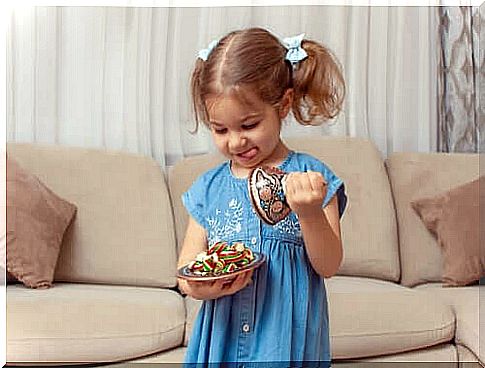Fruit Snack Challenge – The Test That Measures Self-control In Children

Social media has recently been flooded with what has been called “the fruit snack challenge”, which is a test to measure self-control in children. Many people online have also called it “the challenge of patience”, because it is this basic development ability (patience) that is tested.
The challenge is to fill a bowl with something that children enjoy eating, usually something sweet, such as sweets. The parent or the person who takes care of the child places the bowl within sight and reach of the child. However , the child is told that he / she is not allowed to eat the sweets until the adult returns. Meanwhile, a camera records what happens when the child is alone for a few minutes after the adult has left the room.
The children’s reactions are quite varied; some are predictable, while others are more surprising. Some children show great self-control and they even resort to distraction techniques, such as singing or giving themselves instructions on how to avoid touching the candy. Others bite only a small part of the candy, after which they repent and leave the sweets. Then there are also children who can not resist the temptation at all but eat the candy before the adult returns.
A sequel to the marshmallow test
The new test has a predecessor that dates back to the 70s and was known as the “marshmallow test”. It was a researcher named Mischel who, together with his colleagues, conducted the study at Stanford University. Their goal was to learn more about delayed reward and self-control in children.
The marshmallow test is reminiscent of “the fruit snack challenge”, but it had a different approach. If the children managed to resist the temptation, they would receive twice as much candy as they were first offered. The test found that the children who passed the test used distraction techniques and self-instruction.
But the biggest discoveries were made later. Interestingly, the same children were evaluated when they reached adolescence, which led to other important observations.
Those who passed the test had greater social skills and higher self-esteem. Those who, on the other hand, failed to refrain from eating the candy showed a greater degree of impulsivity, aggression and were more likely to develop behavioral disorders.

Self-control in children
Self-control in children is the opposite of childish impulsivity. In principle, it presupposes that the child has the ability to regulate his own feelings and impulses. Self-control is actually a very complex skill, especially in children. It must be trained and is especially difficult to master before the age of four to five.
This ability affects all important aspects of a child. For that reason, it is linked to the development of difficulties in later life stages. In the social field, e.g. self-control in children of particular importance when it comes to respecting other children’s turn to speak, holding back outbursts of rage, sharing things with others and respecting other children’s belongings, etc. In the same way , insufficient self-control leads to poor emotional regulation, something that can cause the child to be overwhelmed in everyday situations.
Some childhood disorders can have serious consequences for the child’s self-control. One such example is ADHD (attention deficit hyperactivity disorder). One of the main characteristics of this disorder is impulsivity, which of course is something that endangers the child’s daily life and also his physical health, as accidents and falls often result.
How to assess self-control in children
“The fruit snack challenge” has entertained users of social media who have been able to witness how some children have an inner struggle to show evidence of self-control. But there are also indications in everyday life that help us assess this ability. Here are some examples of these:
- Some children show patience at school. They wait until they hear their name called out, raise their hand before speaking, respect everyone’s turn to speak and try not to be disturbed during the lessons.
- At the social level, they participate in dialogues and games where they are not always in the center of attention, and where these are never some kind of monologue. Furthermore, they are open to the opportunity to share with others.
- In family contexts, it is noticed that children who gradually learn self-control over time develop more self-calming behaviors in connection with outbursts of anger. They also learn to accept the frustrations they encounter.

Self-control is an ideal, a role model that everyone, regardless of age, should strive for. Children develop this ability in different ways and at different ages. Therefore, not everyone acquires these skills. It is important to remember that learning is a comprehensive process.
As you can see, “the fruit snack challenge” can be a fun experiment. It helps us understand how children handle situations that require self-control. With the help of the experiment, the adult can observe how the child develops this ability.
A good way to instill self-control in children is to show that you yourself possess precisely this ability. Remember that when it comes to raising children, you act as a mirror for your child. Your child will always try to do as you do. So set a good example!









